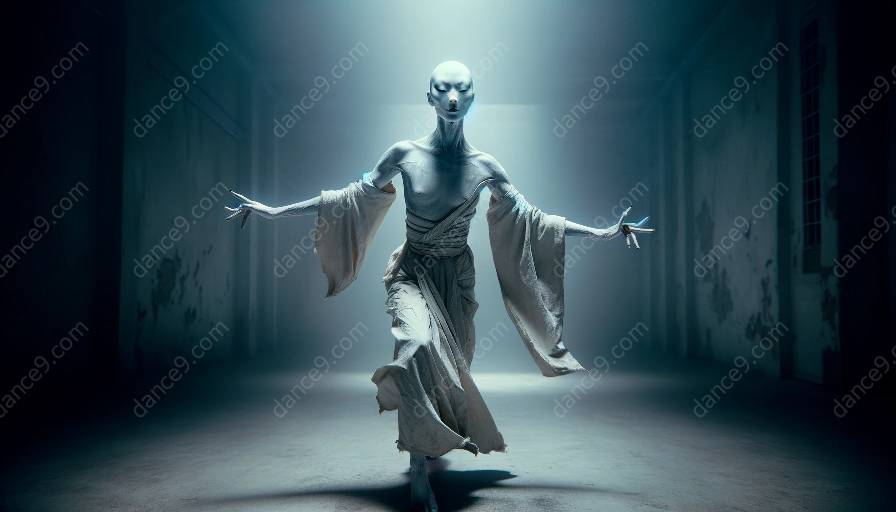When it comes to the world of dance, Butoh stands out as a unique and captivating art form. Originating in Japan, Butoh has a rich history and cultural significance that has made it a notable influence in performing arts and an intriguing subject in dance classes.
The History and Origins of Butoh
Butoh emerged in post-World War II Japan as a response to the country's social and cultural upheaval. It was created by two visionary artists, Tatsumi Hijikata and Kazuo Ohno, who sought to break away from traditional dance forms and express raw human emotions and experiences.
One of the defining characteristics of Butoh is its focus on exploring the depths of the human psyche and the darker, often unexpressed, aspects of human existence. This introspective and evocative approach sets Butoh apart from other dance forms and has contributed to its enduring appeal.
The Intriguing Movements and Expressions of Butoh
In Butoh, movements are often slow, deliberate, and deeply expressive, reflecting the internal emotional landscape of the dancers. This deliberate approach to movement allows for a powerful exploration of themes such as suffering, transformation, and the human condition.
The performers often use their bodies in unconventional ways, contorting and distorting their forms to communicate complex and profound narratives. This distinctive physicality and expression make Butoh a visually compelling and thought-provoking art form.
Butoh's Influence on Performing Arts
As a surreal and captivating dance form, Butoh has left a lasting impact on performing arts around the world. Its ability to delve into the depths of human experience and provoke introspection has inspired choreographers, dancers, and directors across various disciplines.
Many contemporary performing artists have drawn upon Butoh's avant-garde and boundary-pushing nature to shape their own creative works, infusing their performances with the introspective and thought-provoking elements that define Butoh.
Butoh in Dance Classes
When it comes to dance classes, Butoh offers a unique and enriching experience for students. Its unconventional approach challenges dancers to explore their own emotional and physical boundaries, encouraging them to tap into their inner creativity and expressiveness.
Studying Butoh can provide dancers with a deeper understanding of the body's potential for expression and storytelling, as well as an appreciation for the broader cultural and historical context in which the art form developed.
Overall, Butoh brings a distinct and impactful presence to dance classes, offering students an opportunity to expand their artistic horizons and engage with a dance form that is deeply rooted in the human experience.
Topic
Psychological and Emotional Explorations in Butoh Dance
View details
Improvisation and Spontaneity in Butoh Techniques
View details
Integration of Butoh into Dance Training and Education
View details
Sound and Music in Butoh: Enhancing Performative Experiences
View details
Metamorphosis and Transformation in Butoh Expressions
View details
Comparative Analysis: Butoh and Traditional Japanese Dance
View details
Interdisciplinary Collaborations in Butoh and Performing Arts
View details
Ethical Considerations in Teaching Butoh in Dance Education
View details
Self-Exploration and Personal Development in Butoh Practice
View details
Innovations and Trends in Contemporary Butoh Performances
View details
Butoh as a Catalyst for Social Awareness and Activism
View details
Physical and Emotional Conditioning for Butoh Dancers
View details
Butoh and Body Awareness: Spatial Dynamics in Performance
View details
Butoh and Gender: Deconstructing Societal Norms
View details
Butoh and Surrealism: Exploring Artistic Boundaries
View details
Questions
How does butoh relate to traditional and contemporary dance forms?
View details
How does butoh contribute to the evolution of performing arts?
View details
What are the fundamental movements and gestures in butoh?
View details
How can butoh enhance physical expression and creativity in dancers?
View details
What role does butoh play in the exploration of emotions and inner experiences?
View details
What are the main characteristics of butoh choreography?
View details
How does butoh challenge traditional dance aesthetics and techniques?
View details
What are the differences between butoh and other dance styles in terms of movement and expression?
View details
What are the potential psychological and emotional benefits of practicing butoh?
View details
How can butoh contribute to the understanding of body awareness and spatial dynamics in performance?
View details
What cultural contexts and influences are associated with butoh?
View details
How does butoh challenge societal norms and conventions through movement?
View details
What are the key elements of butoh improvisation and spontaneity?
View details
How can butoh techniques be integrated into contemporary dance training programs?
View details
What is the significance of music and sound in butoh performances?
View details
How does butoh embody themes of transformation and metamorphosis?
View details
What are the similarities and differences between butoh and traditional Japanese dance forms?
View details
How can butoh contribute to cross-disciplinary collaborations in the performing arts?
View details
What are the ethical and cultural considerations when incorporating butoh into dance education?
View details
What are the potential challenges and limitations of teaching butoh in university dance programs?
View details
How can butoh serve as a method for self-exploration and personal development in dancers?
View details
What are the evolving trends and innovations in contemporary butoh performances?
View details
How can butoh encourage social awareness and activism through artistic expression?
View details













































































